
MEDIA COVERAGE
Himalayan times: “Genetic study of Mustang man reveals clues on spread of malaria,” by Rajan Pokhrel on June 17, 2024.
Smithsonian: “A Mass Grave of Maya Boys May Shed Light on Human Sacrifice in Chichén Itzá,” by Sonja Anderson on June 13, 2024.
Harvard Gazette: “History of Chichén Itzá written in DNA,” by Christy DeSmith on June 14, 2024. The article is also available in Spanish! “La historia de Chichén Itzá escrita en el ADN.”
New York Times: “Ancient Genomes Reveal Which Children the Maya Selected for Sacrifice,” by Freda Kreier, June 12 ,2024.
Science: “Why did the ancient Maya sacrifice children? DNA provides clues,” by Andrew Curry, June 12, 2024.
CNN: “Who were the victims of Maya sacrifice? Ancient DNA reveals an unexpected finding,” by Katie Hunt, June 12, 2024.
NPR: “A surprising history of malaria is revealed by clues from ancient bones,” by Melody Schreiber, June 13, 2024.
Science: “Oldest malaria cases reveal how humans spread the disease across the globe,” by Andrew Curry, June 12, 2024.
Harvard Gazette: “Tracking entwined histories of malaria, humans,” by Christy DeSmith, June 12, 2024.
BBC Mundo: Xiongnu, los míticos guerreros nómadas que llevaron a China a construir la Gran Muralla, by Dalia Ventura, August 21, 2023. https://www.bbc.com/mundo/articles/cjj178q0x54o
Harvard Gazette: Bringing Stone Age genomic material back to life, by Christy DeSmith, May 4, 2023.
Science: ‘Lost’ microbial genes found in dental plaque of ancient humans, by Andrew Curry, May 4, 2023.
Discover Magazine: What Were Stone Age Bacteria Like? We Now Have the First Clues, by Matt Hrodey, May 4, 2023.
Live Science: “‘Lost’ bacteria found on Neanderthal teeth could be used to develop new antibiotics“, by Kristina Killgrove, May 11, 2023.
SINC: Logran ‘revivir’ metabolitos bacterianos de individuos del Paleolítico, by Ana Hernando, May 5, 2023.
Harvard Gazette: “DNA shows poorly understood empire was multiethnic with strong female leadership,” by Christy DeSmith, April 28, 2023.
The Times of London: “Great Wall of China ‘built to keep out warrior princesses’,” by Rhys Blakely, April 25, 2023.
South China Morning Post: “Who were the ancient Xiongnu? Study uncovers genetically diverse empire and nomadic princesses,” by Echo Xie, April 22, 2023.
Live Science: “Ancient princesses helped build vast warrior empire that prompted China to erect the Great Wall,” by Tom Metcalfe, April 20, 2023.
Science Times: “Ancient Princesses Played Vital Political Role in Massive ‘Xiongnu’ Empire; Earliest Fortifications of Great Wall of China Could Have Been Constructed To Stop Raids,” by Kendra Stacy, April 20, 2023.
ONET: “W wieloetnicznym imperium Xiongnu kobiety miały wielką władzę,” by Mariusz Błoński, April 18, 2023.
CNN: “Ancient DNA reveals secrets of empire that pushed China to build its Great Wall,” by Katie Hunt, April 17, 2023.
Technology Networks: “Ancient DNA Reveals History of Mongolia’s First Nomadic Empire,” by Sarah Whelan, April 15, 2023.
Science: “Politically savvy princesses wove together a vast ancient empire,” by Andrew Curry, April 14, 2023.
Nature: “Burials reveal women’s high status in ancient Mongolia,” April 14, 2023
London Review of Books: “Peasants wear ultramarine,” by Barbara Newman, February 10, 2022.
Schweizer Studienstiftung: “Multidisziplinarität und alte DNA – ein Interview mit Prof. Dr. Christina Warinner,” by Angela Odermatt, November 5, 2021. Also available on Reatch.
Nature: “Lessons from the ancient oral microbiome,” by Kristina Campbell, October 27, 2021.
Nature: “The unexpected ancestry of Inner Asian mummies,” by Paula N. Doumani Dupuy, October 27 2021.
Nature: “DNA reveals surprise ancestry of mysterious Chinese mummies,” by Smriti Mallapaty, October 27. 2021.
South China Morning Post: “Xinjiang mummies’ origins closer to home than we thought, study finds,” by Holly Chik, October 27, 2021.
CNN: “DNA reveals unexpected origins of enigmatic mummies buried in a Chinese desert,” by Katie Hunt, October 27, 2021.
Nature Podcast: “Genomics unwraps mystery of the Tarim mummies,” by Nick Petrić Howe & Shamini Bundell, October 27, 2021.
Science: “Western China’s mysterious mummies were local descendants of ice age ancestors,” by Ann Gibbons, October 27, 2021.
Harvard Office of the Vice Provost for Advances in Learning: “Learner-Centered Pedagogy for Skill-building, an Interview with Associate Professor Christina Warinner,” October 2021.
Harvard Medical School: “Proceeding with Caution – First global guidelines proposed for ancient DNA research,” by Stephanie Dutchen, October 20, 2021
New York Times: “Ancient-DNA Researchers Set Ethical Guidelines for Their Work,” by Sabrina Imbler, October 20, 2021.
Newstalk National Radio (Ireland), The Moncrieff Show: “Dental plaque – the unexpected time capsule,” radio interview on September 23, 2021.
New Scientist: “The microbial gunk that hardens on teeth is revealing our deep past,” by Graham Lawton, September 15, 2021.
Quest: Science for South Africa, Academy of Science of South Africa (ASSAf), Volume 17, Number 2: “The evolutionary history of our oral bacteria,” 2021. Full issue available here.
ABC Radio National, Health Report: “Our oral microbiome, and our ancestors,” May 24, 2021.
Helsingin Sanomat: “Edes luolamiehet eivät syöneet pelkkää lihaa tai raakaruokaa – Esi-isämme kypsensivät kasviksia paljon aiemmin kuin on luultu,” by Niko Kettunen, May 24, 2021.
Nature: “Microbes in Neanderthals’ mouths reveal their carb-laden diet“, May 14, 2021.
Business Insider: “If you want to eat like your paleo ancestors, stop cutting out all carbs, a new study suggests,” by Aylin Woodward and Gabby Landswerk, May 14, 2021.
Deutschlandradio: “Mundflora das Mikrobiom unserer Vorfahren,” by Christine Westerhaus, May 13, 2021.
CNN: “‘Lost’ microbes found in ancient poop could relieve chronic illness,” by Jack Guy, May 12, 2021.
Science: “Piles of ancient poop reveal ‘extinction event’ in human gut bacteria,” by Andrew Curry, May 12, 2021.
Popular Science: “Ancient dental plaque shows humans have always loved carbs,” by Ellie Shechet, May 11, 2021.
Harvard Gazette: “Turns out developing a taste for carbs wasn’t a bad thing,” by Juan Siliezar, May 11, 2021.
Science: “Neanderthals carb loaded, helping grow their big brains,” by Ann Gibbons, May 11, 2021.
Weizmann Institute: “המאכלים של תקופת הברונזה“, by Yonath Eshhar, December 23, 2020.
Haaretz: “שיניים עתיקות מגלות: במזרח התיכון אכלו כורכום וסויה לפני יותר מ-3,500 שנה“, by Asaf Ronel, December 22, 2020.
National Geographic: “Philistines had a taste for far-flung foods, fossilized tooth plaque reveals“, by Andrew Curry, December 21, 2020.
Inverse: “Food study peels back human history 1,000 years earlier than thought“, by Claire Cameron, December 21, 2020.
Our work on the role of women in medieval manuscript production has been featured in the opening chapter of “The Book of Gutsy Women” by Hillary Rodham Clinton and Chelsea Clinton.
Science: “Horse mastery helped mysterious Mongolian warriors build a multiethnic empire,” by Andrew Curry, November 5, 2020.
Canadian Broadcasting Corporation, Quirks and Quarks: “Machine learning helps archaeologists identify the source of ancient poop“, by Amanda Buckiewicz, June 5, 2020 (6 minutes).
Harvard Gazette: “Filling gaps in our understanding of how cities began to rise,” by Juan Siliezar, May 29, 2020.
Science Friday: “The origin of feces“, May 15, 2020 (16 minutes).
Welt: “Warunug vor dem Hunde,” by Holger Kreitling, April 23, 2020.
Welt: , April 22, 2020.
Courrier International: , April 21, 2020.
Vice: “Does This 7,000-Year-Old Poop Belong to a Human or Dog? Machine Learning Has the Answer,” by Becky Ferreira, April 17, 2020.
New Scientist: ““, by Michael Le Page, Aprily 17, 2020.
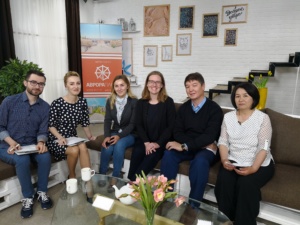
Утреннее шоу “С утра пораньше“, Kyrgyz morning television, May 25, 2019.
The Medievalist: “The nun with blue teeth: a medieval mystery,” by Daniele Cybulskie, January 30, 2019.
Science: “These 1000-year-old teeth belonged to a skilled female artist, pigment reveals,” by Lizzie Wade, January 9, 2019.
Science Podcast: “A mysterious blue pigment in the teeth of a medieval woman,” with Sarah Crespi (interview starts at 11 min 15s), January 11, 2019.
New York Times: “In an Ancient Nun’s Teeth, Blue Paint — and Clues to Medieval Publishing,” by Steph Yin, January 9, 2019.

National Geographic: “Female medieval master artist revealed by dental calculus,” by Andrew Curry, January 9, 2019.
NPR All Things Considered: “A blue clue in medieval teeth may bespeak a woman’s artistry circa 1000 AD,” by Nell Greenfieldboyce, January 10, 2019.
The New Scientist: “Medieval dental plaque suggests women played important role as scribes,” by Michael Le Page, January 9, 2019.
BBC News: “Blue tooth reveals unknown female artist from medieval times,” January 9, 2019.
Associated Press: “Medieval woman’s hidden art career revealed by blue teeth,” by Christina Larson, January 9, 2019.
Reuters: “Gems in teeth hailed as proof that women more widely involved in medieval texts,” January 9, 2019.
The Atlantic: “Why a Medieval Woman Had Lapis Lazuli Hidden in Her Teeth,” by Sarah Zhang, January 9, 2019.
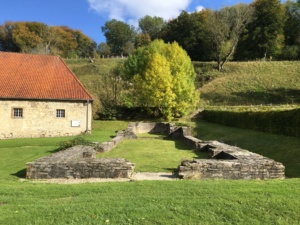
CNN: “Rare blue pigment found in medieval woman’s teeth rewrites history,” by Ashley Strickland, January 9, 2019.
Atlas Obscura: “How a Blue Tooth Led Scholars to a Medieval Manuscript Mystery,” by Jessica Leigh Hester, January 9, 2019.
Gizmodo: “Blue pigment in 1,000-year-old teeth links women to the production of medieval manuscripts,” by George Dvorsky, January 9, 2019.
Popular Science: “These 1,000-year-old, blue-specked teeth could rewrite medieval history,” by Eleanor Cummins, January 10, 2019.
Galileo: “Un lapislazzuli riscrive la storia dell’arte medioevale,” by Elisa Manacorda, January 11, 2019.
Haaretz (Israel): “Blue plaque signals that women illuminated religious texts,” January 9, 2019.
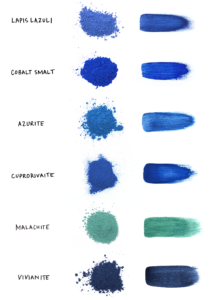
Chemistry World: “Blue teeth reveal medieval nun’s artistic talent,” by James Urquhart, January 11, 2019.
National Post (Canada): “Gemstone crystals found in teeth of 11th century nun sheds light on women’s rollin creating medieval religious texts,” January 9, 2019.
Telegraph UK: “Blue flecks in 900-year-old teeth reveal medieval nun was expert manuscript painter,” by Nick Squires, January 10, 2019.
Public Radio International: “Rare gems in skeletons teeth challenges thinking about medieval women“, January 9, 2019.
SWR: “Was Zähne über das Leben verraten,” January 10, 2019.
SRF: “Überraschungen,” January 14, 2019.
WDR: “Die Nonne aus Dalheim,” January 10, 2019.
DLF: “Was die Zähne einer Nonne aus dem Mittelalter verraten,” January 10, 2019.
CBC: “Blue pigment found on a medieval woman’s teeth suggests she was a skilled, literate artist,” January 11, 2019.
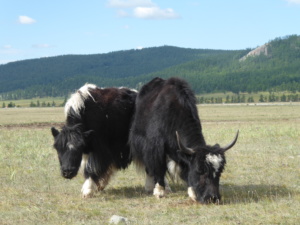
Nature: “How Mongolia’s milk-based empire got its start,” November 5, 2018.
Science: “How can you eat dairy if you lack the gene for digesting it?,” by Andrew Curry, November 5, 2018.
National Geographic: “Ancient DNA reveals complex migrations of the first Americans,” by Michael Greshko, November 8, 2018.
Scientific American podcast: “Ancient Tooth Tartar Traps Clues to Iron Age Diet,” by Christopher Intagliata, July 24, 2018.
Archaeology Magazine: “Conquistador contagion,” by Marley Brown, May/June 2018.
Science News for Students: “Drilling into the secrets of teeth,” by Esther Landhuis, February 1, 2018.
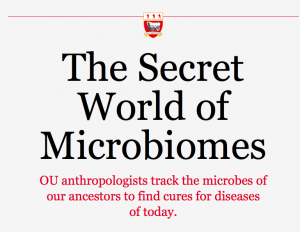
Sooner Magazine: “The secret world of microbiomes,” by Chip Minty, Summer 2017, Vol 38, Issue 1.
Anthropology News Magazine: “Christina Warinner, Archaeology of the Invisible”, by Charlotte Hollands, September 8, 2017. Charlotte. 2017. “Christina Warinner.” doi: 10.1111/AN.607
Max Planck Research Magazine: “Change that came from the plowed field,” by Claudia Doyle, 2017.
Archaeology Magazine: “The heights we go to,” by Karen Coates, August 14, 2017.
Archaeology Magazine: “Worlds within us,” by Samir Patel, September 26, 2016.
NSF Science 360 News: “Researchers conduct the first ancient DNA investigation of the Himalayan arc,” Top story, June 2016.
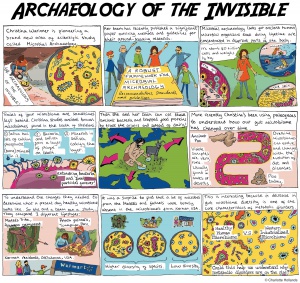
Science: “Ancient DNA divide,” by Anne Gibbons, June 2016.
PNAS: “Ancient teeth reveal clues about microbiome evolution,” by Jyoti Madhusoodanan, May 24, 2016.
Nature: “Ancient Genomes from Tooth Plaque,” March 30, 2016.
Archaeology Magazine: “Dental Calculus Yields Human DNA,” March 29, 2016.
2016 Human Origins, Leakey Foundation, with Meredith Johnson. Interviewed April 5, 2016.
PBS NewsHour, with Hari Sreenivasan, interviewed on April 5, 2016.
SciTech Now, PBS: “Going Paleo, what it actually means,” with Margaret Leigh Sinrod, March 15, 2016.
The Crush, with Davin Sweeney (podcast), interviewed May 19, 2016.
R&D Magazine: “Dental Plaque Helps Anthropologists Reconstruct Ancient Human Mitogenome,” by Greg Watry, R&D Magazine, March 29, 2016.
National Geographic: “Tooth Plaque May Hold Clues About Ancient Life,” by Anna Nowogrodzki, March 16, 2016.
Scientific American: Meet the Dentist to the Dead, by Megan Gannon, October 2015.
Discover Magazine: Uncovering our Ancestral Microbiomes, by Adam Hadhazy, September 2015.
Vox: What the Paleodiet Gets Wrong, by Julia Belluz, August 20, 2015.
Discover Magazine: Top 100 Scientific Discoveries of 2014, #69: “Medieval Dental Plaque Offers Dietary Clues,” by Andrew Curry, Jan/Feb 2015.

Science: “Protein Power,” by Robert Service, July 24, 2015.
Cell: “History Lessons from Bacteria,” by Cindy Lu, November 20, 2014.
Microbe Magazine: “Periodontal pathogens from medieval teeth,” by John Otrompke, June 2014.
British Dental Journal: “Calculus is a long term reservoir of disease,” by Laura Pacey, April 25, 2014.
New Scientist: “Heritage plaque – our ancestors’ health read from teeth,” by Sharon Levy, April 2014.
Nature Genetics: “Ancient human oral plaque preserves a wealth of biological data,” by Jessica Metcalf, Luke Ursell, and Rob Knight, April, 2014.
Nature Reviews Microbiology: “Microbiome: Revealing secrets from ancient dental calculus,” by Andrea du Toit, March 14, 2014.
RTS.ch (radio interview with co-author Frank Rühli): “La tolérance au lait ne date pas d’hier,” January 27, 2014.
Futurity: “Got milk? Humans did 5,000 years ago,” November 28, 2014.
Forskning (Norway): “Melkedrikkere i minst 5000 år,” by Ingrid Spildid, November 28, 2014.
The Guardian (UK): “What language tells us about the roots of the stonge age diet,” by David Shariatmadari, October 22, 2014.
Acic Bilim: “1000 YAŞINDAKİ ALMANYALININ AĞZINDAKİ GENOMLAR,” by Omer Gokumen, June 4, 2014.
Oklahoma Daily: “Medieval mouths similar to ours,” by Caitlin Schachter, March 28, 2014.
Los Angeles Times: “Preserved in plaque of ancient teeth, a fossilized microbial world,” by Deborah Netburn, February 28, 2014.
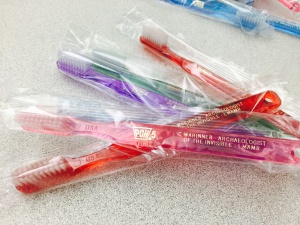
Berliner Zeitung: “Karies aus dem Mittelalter,” February 27, 2014.
Tech Times: “‘Microbial Pompeii’ on 1000-year-old skeletons gives scientists a peek of ancient diet and oral hygiene,”by Maryanne Moll, February 27, 2014.
Gaia News: “Trovata placca su denti fossili: una ‘Pompei dei microbi’,” by Leonardo Debbia, February 27, 2014.
‘Microbial Pompeii’ found on 1,000-year-old human teeth: One News Page Australia and Geobeats, Feb. 26, 2014.
Huffington Post: “Ancient Dental Plaque From 1,000-Year-Old Human Skeletons Sheds New Light On Disease,” by Tanya Lewis, February 25, 2014.
NBC News: “Microbial Pompeii found on 1,000-year-old teeth from Germany,” by Tanya Lewis, February 25, 2014.
Wissenschaft Aktuell: “Zahnstein-Archäologie: Menschen des Mittelalters litten schon unter Paradontitis,” by Joachim Czichos, February 25, 2014.
Yorkshire Post: “Teeth of 1,000-year-old skeletons reveal secrets,” February 25, 2014.
Turkuvaz Aktuel: “1000 yıldır yaşayan mikrop,” February 26, 2014.
Thousand-Year-Old Teeth Reveal Diet and Disease: Scientific American Podcast on Warinner et al. 2014’s Nature Genetics article, by Christopher Intagliata
Discovery News: “‘Microbial Pompeii’ Found on 1,000-Year-Old Teeth,” Tanya Lewis, February 25, 2014.
Tages Anzeiger: “Uralte Antibiotika-Resistenz,” by Barbara Reye, February 25, 2014.
Tendencías 21: “Descubren un “yacimiento” microbiano en dientes humanos de 1.000 años,” February 25, 2014.
TV Ciencia: “Tártaro fossilizado em dentes de esqueleto ancestral preserva informação genética de bactérias,”February 25, 2014.
Genome Web, The Daily Scan: “In the teeth,” Februrary 25, 2014.
Scienceagogo: “Ancient teeth give up bacterial goldmine,” by Will Parker, February 24, 2014.
Daily Mail: “‘A microbial Pompeii’: Plaque on 1000-year-old human teeth could unlock secrets of medieval diet and disease,” Ellie Zolfagharifard, February 24, 2014.
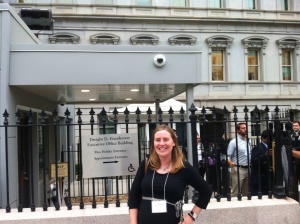
Deutschlandfunk: “Schon im Mittelalter litten Menschen unter Zahnfleishentzündungen,” February 25, 2014.
S&TRF “Тысячелетний зубной камень позволил больше узнать о бактериях прошлого,” by Наука и техника, February 24, 2014.
Science Recorder: “Disease-causing bacteria in dental plaque preserved for 1,000 years looks familiar,” by Jonathan Marker, Feburary 24, 2014.
Ciencia Portugal: ““Pompeia microbiana” descoberta nos dentes de esqueletos com 900 anos,” by Ana Gerschenfeld, February 25, 2014.
Science 2.0: “Periodontal disease bacteria found in 1000 year old dental plaque,” February 24, 2014.
Der Standard: “Mittelalterlicher Zahnstein: Mikrobiologisches Fenster in die Vergangenheit,” February 25, 2014.
Science Newsline: “OU researcher and team discover disease-causing bacteria in dental plaque preserved for 1,000 years,” Feburary 24, 2014.
NRC.nl: “Middeleeuwers aten kool, schaap en tarwe, laat tandsteen zien,” by Hester van Santen, February 24, 2014.
Infection Control Today: “Dental plaque bacteria preserved for 1,000 years similar to that found in oral cavities today,” February 24, 2014.
International Business Times: “Dental Plaque of Medieval Germans Provides ‘Microbial Pompeii’ of Bacteria,” by Hannah Osborne, February 24, 2014.
Archaeology Magazine: “Dental plaque offers a window to the past,” by Jessica Saraceni, February 24, 2014.
Live Science: “‘Microbial Pompeii’ Found on Teeth of 1,000-Year-Old Skeletons,” by Tanya Lewis, February 24, 2014.
AlphaGalileo: “Scientists unlock a ‘microbial Pomepii’,” February 23, 2014.
Videnskab DK: “Vild opdagelse: Tandsten fra 1000 år gamle munke sladrer om alvorlige sygdomme,” by Rasmus Kragh Jakobsen, February 23, 2014.
Science Daily: “‘Microbial Pompeii:’ 1,000-year-old plaque preserves bacteria, microscopic particles of food on skeleton teeth,” February 23, 2014.
Science 2.0: “Lactose tolerance had spread to Central Europe even 1,000 years ago,” January 24, 2014.
Phys.org: “Central Europeans already digested milk 1,000 years ago, researchers find,” January 23, 2014.

Science: “Fossilized teeth offer mouthful on ancient microbiome,” by Andrew Curry, December 13, 2013.
Deutschlandfunk (radio interview): “Forscher rekonstruieren Bakteriengemeinschaften anhand von Zahnbelag,” by Christine Westerhaus, November 25, 2013.
Lessons from Ancient Diets: Debunking the Paleodiet (2013): TEDxOU talk on Paleolithic Diets and the Paleodiet
NPR: “Was 2013 really the year of the paleodiet?” by Eliza Barclay, December 30, 2013.
Scientific American: “How to really eat like a hunter-gatherer: Why the Paleo Diet is half-baked,” June 3, 2013.
Salon: “Paleo diet is half-baked,” June 9, 2013.
Jezebel: “Sorry, Neo Cavemen, but your Paleo Diet is pretty much bullsh*t,” June 10, 2013.
Motherboard: “Determinism and Its Enemies Are Still Waging War over the Soul of Science,” February 2013.
The Scientist: “Genetics-Poverty Link Questioned,” Feburary 3, 2013.
The Wenner Gren Blog: “Inside Current Anthropology: Is Poverty in Our Genes?” February 1, 2013.
The University of Chicago Press: “Do Our Genes Make Us Poor? Anthropologists refute the controversial claim that economic development is biologically determined,” January 2013.
Before it’s News: “An Academic Smackdown: Refuting the Piss Poor Social Science Claim that ‘Poverty is in Our Genes,’” January 28, 2013.
The Oklahoma Daily: “Anthropologist Aims to Break Misconceptions of Paleolithic Diet,” January 22, 2013.

CNN: Why Your Dental Plaque is Valuable (2012): An interview with CNN.com about why studying the ancient oral microbiome is important
The Last Word on Nothing: “Skeletons in the closet,” by Heather Pringle, August 9, 2012.
ArchaeoBlog: “Yet another source of ancient health information,” by Anthony Cagle, July 31, 2012.
Minerva: “Dental Detritus Reveals Useful Facts,” vol. 23, #6, Nov/Dec 2012
National Geographic: “Sky Caves of Nepal,” October, 2012
Antiquity: “Ancient salt mining and salt men: the interdisciplinary Chehrabad Douzlakh project in north-western Iran,” September, 2012, vol. 86, issue 333.
Der Freitag (Berlin, Germany): “Das Zahnstein Orakel,” August 16, 2012
Archaeology Magazine: “Archaeological Headlines,” July 30, 2012
Observer (Guardian, UK): “History to sink your teeth into,” July 29, 2012
Observer (Guardian, UK): “Christina Warinner: it’s a good thing our ancestors didn’t floss their teeth,” July 28, 2012.
Wired UK: “Our ancestors’ dirty teeth help Christina Warinner decode our past,” June 2012
CNN.com: “Why your dental plaque is valuable,” May 20, 2012, includes video
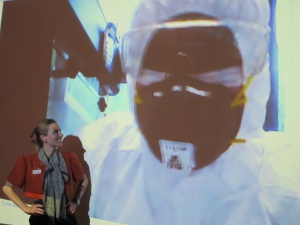
Swissinfo.ch: “Unwrapping the medical messages of mummies,” Dec 9, 2011, online tour of the UZH Mummy Exhibition
Sveriges Television Sweden: available online October 2011 through February 2012 (interview begins around minute 21:50)
Tages Anzeiger: “Uralte Patienten,” Sept 10, 2011